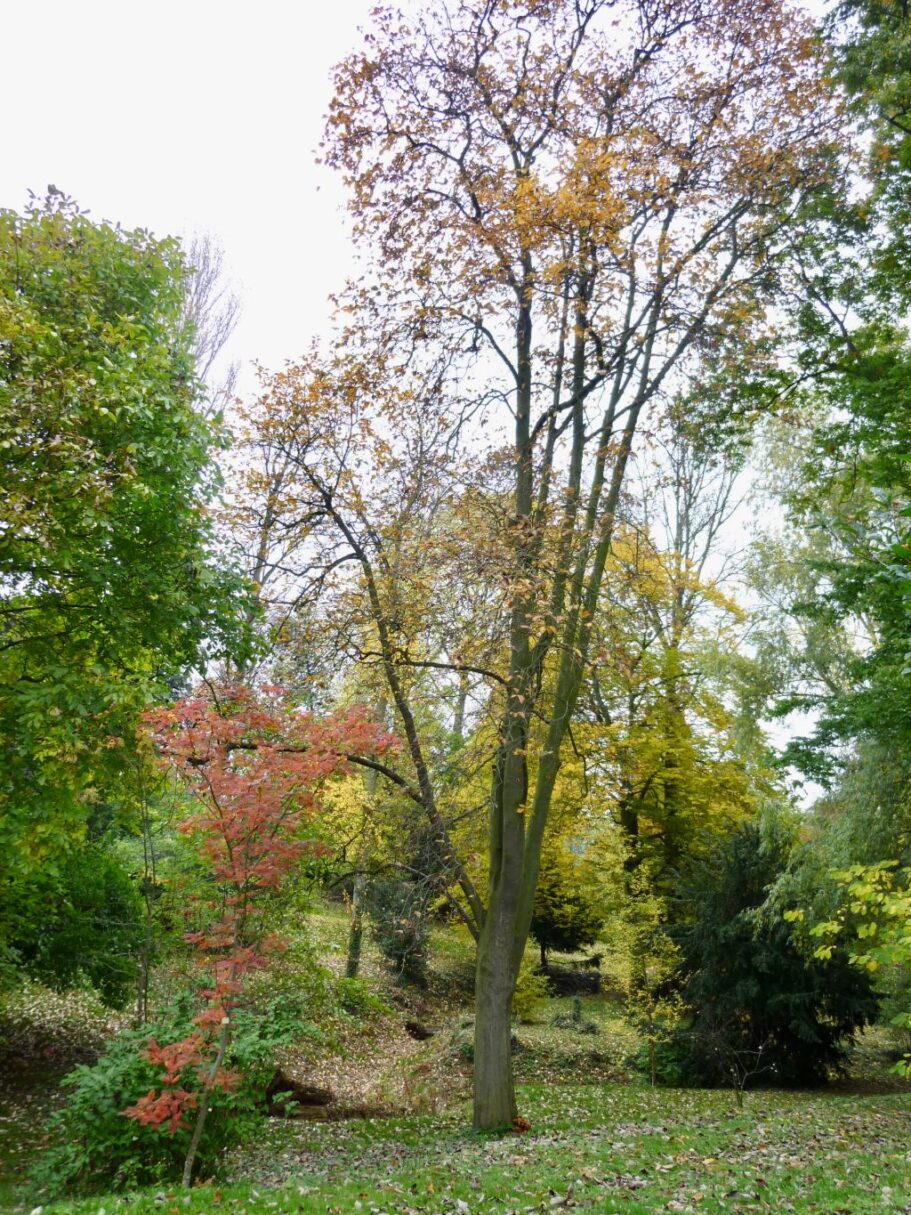#82 SERVICE TREE
Sorbus decipiens

This tree is at the western end of the Moat Path, on the south side – near the steps.
| Distribution: | Endemic to Germany, Critically endangered in the wild. Naturalised in the UK, including the Avon Gorge. |
| Planting Date: | 1917 from J Cheal and Sons, Lowfield Nurseries, Crawley Planted in error for Sorbus domestica |
| Growth Habit: | Round headed on tall straight limbs. |
| Bark: | Grey-brown with warm undertones, smooth with many lenticels at first, developing rugged, superficial, vertical cracking with age. |
| Leaf: | Elliptic to ovate with pointed tip, and toothed. Smooth dark green above, paler and felted beneath turning russet-orange in late autumn. |
| Flowers: | Corymbs of 5-petalled white flowers clustered on short silky-haired stems. |
| Fruit: | Clusters of small 1 cm berries, with persistent calyxes and flecked with tiny white lenticels, ripening from felted green to shining orange-red in Autumn. |
| Toxicity: | Berries are said to be edible, but very sour. |
| Tree size in April 2023: | Height 21 m and girth 189 cm at 0.8 m height |
| Uses: | Decorative tree for parks and gardens. Berries supply essential food for birds. |
| Plant Hunter: | Unknown |
| Introduction Date: | Unknown |
| Anecdotes and Comments | Alternative common name: Sharp-toothed Whitebeam. Rated English Champion in April 2023, by The Tree Register, on account of its height. |